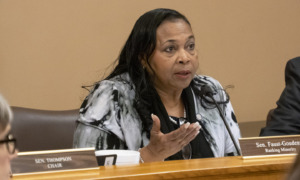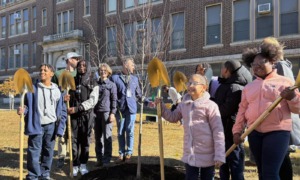 Nearly 9 million of the 25 million adolescents in this country live in low-income households today, and of that 9 million, almost 4 million are living at or below the federal poverty level.
Nearly 9 million of the 25 million adolescents in this country live in low-income households today, and of that 9 million, almost 4 million are living at or below the federal poverty level.
Youth-serving human service professionals see the challenges many of these young people face each day, and research corroborates those barriers. Many face higher rates of school dropout, may engage in early or unsafe sexual activity, and are more likely to use illegal substances or become justice-involved than their middle- and high-income peers.
But they are also ripe for critical supports and human service interventions — ones that serve the whole family and stand to break intergenerational cycles of poverty at a time when youth are on the cusp of or emerging into adulthood. The throes of adolescence are ones of great upheaval and malleability — where young people are moving toward independence but still relying on their parents and family for guidance and models for a path forward.
Two-generation approaches offer a unique opportunity to touch young people on this path toward adulthood, as well as offer their parents and families services that increase their economic self-sufficiency.
The two-generation strategy originates with the launch of Head Start in 1965, which called upon families and communities to support children’s successful early learning and development together. In the 1980s and 1990s, a wave of two-generation demonstration programs focused primarily on young mothers on welfare — promoting life skills, educational attainment and employment, as well as offering child care. However, these approaches lost favor when program evaluations showed no effect on parents’ educational, job training or employment outcomes. Additionally, with the passage of welfare reform in 1996, “work-first” approaches became a dominant approach — focusing exclusively on adult employment.
In recent years there has been a resurgence in two-generation programming.
Its return has been driven, in part, by new research showing the integral link between parental economic stability and a child’s social-emotional and physical development. This wave of “two-generation 2.0” programs address the needs of children and their parents together by combining proven “child-focused” programs, such as Head Start and early childhood education, with “adult-focused” programs, such as employment and postsecondary education. Most new two-generation programs target very young, often preschool age children and their parents. Few offer services to adolescents between ages 10 and 19.
There is a gap in information and research on two-generation services for adolescents. However, a few program models have begun to intentionally integrate the needs of adolescents into a comprehensive whole-family, two-generation framework. Examples of such programs include:
- The Urban Institute’s Housing Opportunities and Services Together (HOST) initiative was launched as a demonstration project in 2010 and now has sites in housing authorities in Portland, Oregon; Chicago; New York City; and the District of Columbia. HOST uses public and subsidized housing as its two-generation platform, working with adolescent residents and their families. HOST sites offer a “whole-family wraparound model” of services — supports for family members of all ages. The program aims to keep adolescents on track in school while also providing supportive services such as anger management and trauma-informed approaches, mentorship and after-school programs. HOST sites are currently being evaluated, looking at a range of adolescent-focused outcomes related to improved school performance, reduced justice-system involvement, reduced anxiety, increased motivation and increased physical health.
- AVANCE, Inc. is based in Texas, offering parenting skills and early education supports. While the program generally focuses on parents and their children ages 0 to 3, an AVANCE-Houston site has begun to focus on teenage mothers in high school. The site offers Early Head Start center-based services directly in a local high school to encourage teen parents to graduate and plan for future studies. About 90 percent of parent-participants recently surveyed plan to pursue postsecondary education, and case management files have documented a 22 percent increase in employment among AVANCE-Houston families.
This next wave of two-generation 2.0 approaches are encouraging but still in their infancy. Programs like AVANCE and HOST suggest these strategies can and should include children of all ages, not just our youngest. They broach, by their very existence, important opportunities around growth in the two-generation sphere — ones that serve all families in need, no matter a child’s age.
Nora E. Gilligan is a senior associate at ICF, where she works on a range of projects affecting low-income children, youth and families. She previously worked on Temporary Assistance to Needy Families (TANF) program policy within the federal Administration for Children and Families, with a focus on family homelessness issues.
























